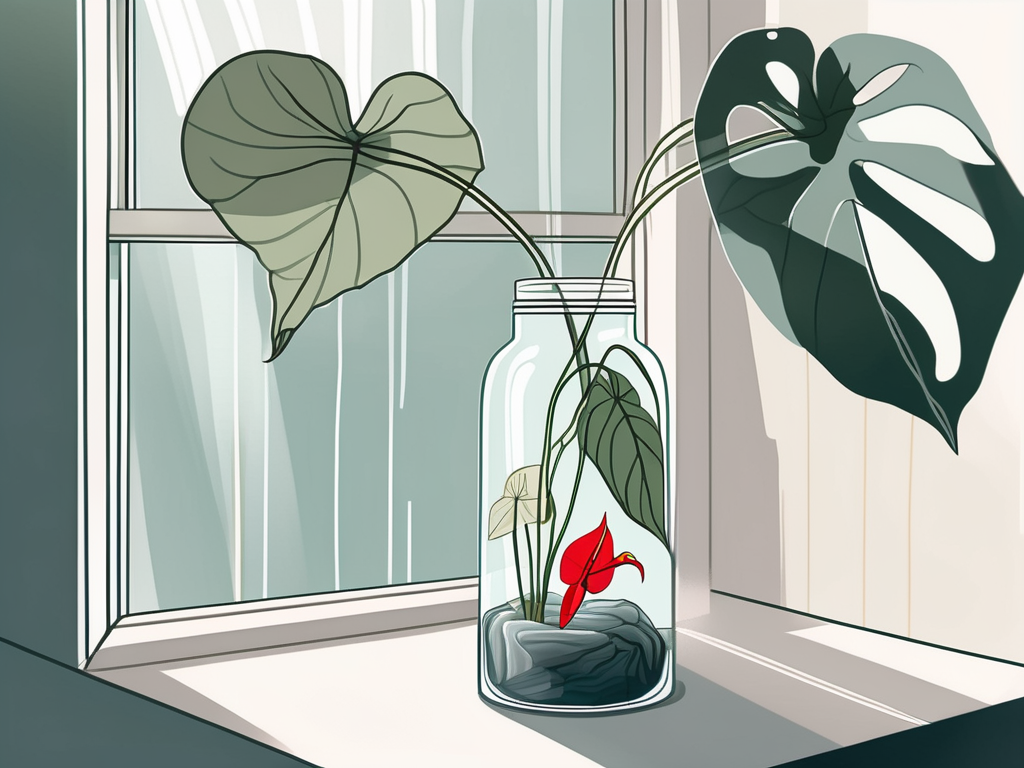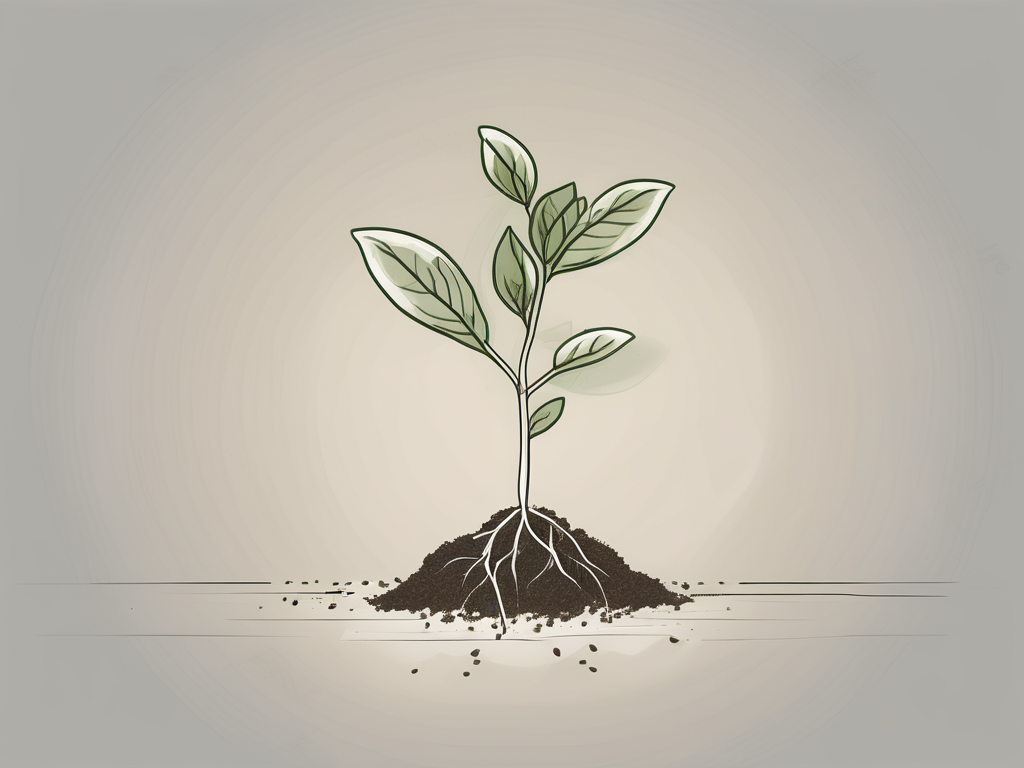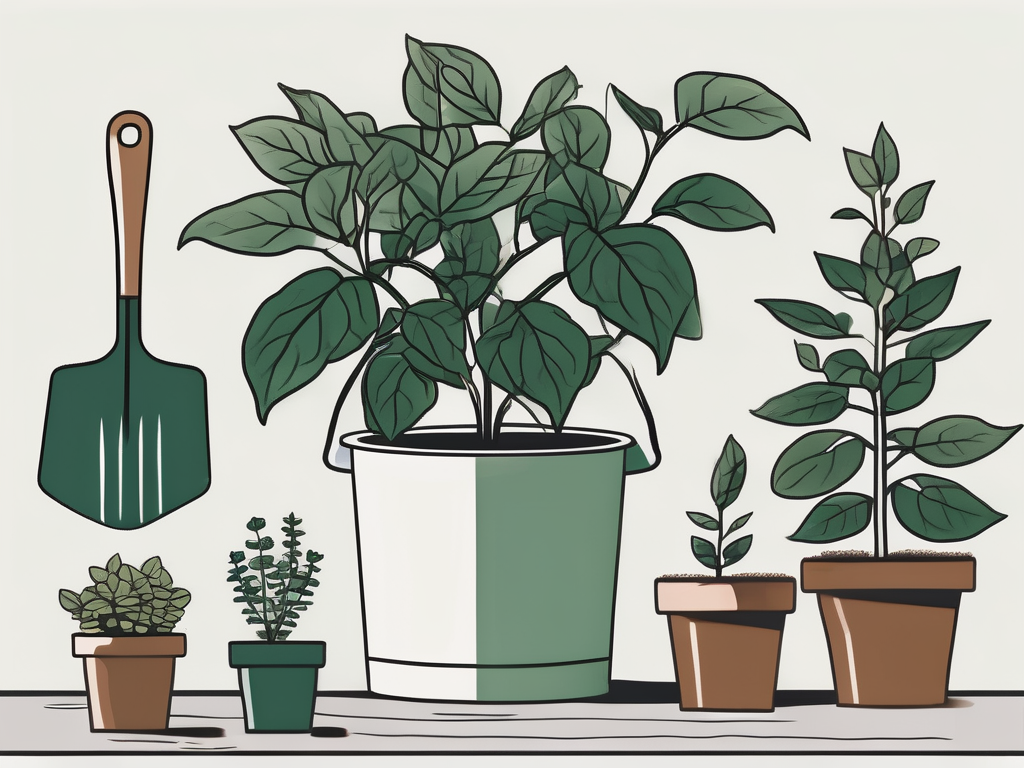
Ever find yourself staring at those stunning Anthurium plants, admiring their vibrant leaves and beautiful flowers, and think, "I need more of these in my life"? You're not alone. Anthuriums, with their glossy leaves and striking blooms, have a way of capturing our hearts. And the good news? You can easily multiply your Anthurium family through water propagation. It's a fun and rewarding process that even beginners can master.
In this article, we'll walk you through the steps of propagating Anthurium in water, from selecting the right cutting to ensuring it thrives in its new watery home. We'll cover everything you need to know to turn a single plant into a thriving collection. So grab your gardening gloves and let's get started!
What You Need to Get Started
Before you jump into the propagation process, it's important to gather all the necessary materials. Think of this as your propagation toolkit, ensuring you have everything at hand when you're ready to begin. Here's what you'll need:
- Anthurium plant: Choose a healthy plant with mature stems. Look for vibrant leaves and no signs of pests or disease.
- Sharp scissors or pruning shears: You want a clean cut, so make sure your tools are sharp and sanitized.
- Glass or jar: A clear container will allow you to watch the roots grow, which is part of the fun!
- Filtered or distilled water: Tap water can contain chlorine and other chemicals that aren't ideal for new roots.
- Optional root hormone powder: This can help encourage root growth, though it's not strictly necessary.
Once you have all your materials ready, it's time to move on to the next step.
Selecting the Perfect Cutting
Selecting the right cutting is crucial for successful propagation. You’ll want to choose a part of the plant that’s healthy, strong, and likely to thrive in water. But what does that look like?
First, identify a stem that is at least 6 inches long and has a few leaves. You'll be cutting this stem just below a node, which is where new roots will develop. A node is a small bump on the stem where leaves or flowers grow. If you're unsure what a node looks like, think of it as the plant's version of an elbow or knee. It's a joint where all the action happens!
Once you’ve identified a healthy stem, it’s time to make the cut. Using your sanitized scissors or pruning shears, cut just below the node. Aim for a clean cut to minimize damage to the plant. It might feel a bit like giving your plant a haircut, so take a deep breath and snip with confidence!
Preparing the Cutting for Water
With your cutting in hand, it's time to prep it for its watery adventure. This step is essential to ensure your cutting is ready to start growing roots.
First, remove any leaves from the lower part of the stem. You want to leave a few leaves at the top, but make sure no leaves will be submerged in water. Leaves in water can rot and cause bacteria to build up, which is a no-go for root growth.
If you chose to use root hormone powder, now is the time to dip the cut end of your stem into the powder. This step is optional, but it can give your cutting a little boost in the root department. Think of it as a multivitamin for your plant!
Now that your cutting is prepped, it's time to move on to the next step: placing it in water.
Setting Up Your Water Propagation Station
Now that your cutting is ready, it's time to set up your water propagation station. This is where the magic happens, and it’s surprisingly simple!
Fill your glass or jar with filtered or distilled water. You want enough water to cover the nodes but not the leaves. Remember, too much water can lead to leaf rot, and we want to avoid that at all costs.
Gently place your cutting into the water, ensuring the nodes are submerged. It’s like giving your cutting a relaxing bath, minus the bubbles and rubber ducky. Position the glass or jar in a spot with bright, indirect light. Direct sunlight can be too harsh, so a location near a window with filtered light is ideal.
And there you have it! Your propagation station is officially set up. Now comes the waiting game, but don’t worry, it doesn't take too long to see results.
Monitoring the Growth Process
Once your cutting is settled in its new watery home, the waiting and watching begin. This stage is all about patience and observation, with a sprinkling of excitement as the roots start to form.
Check your cutting every few days to see if roots are starting to grow. Depending on the conditions, you might see root growth in as little as two weeks, though sometimes it can take a bit longer. It’s like watching a slow-motion nature documentary, but with a much happier ending!
While you're monitoring, keep an eye on the water level. Top it up with fresh filtered or distilled water as needed to ensure the nodes remain submerged. If the water becomes cloudy or murky, change it out for fresh water to prevent bacteria buildup.
Noticing any changes in the leaves? If they start to yellow or wilt, it might be a sign that the cutting isn’t happy with its environment. Make sure it’s getting enough light and that the water is fresh and clean. With a little attention, you'll soon see those roots developing.
Transplanting Your New Plant
Once your cutting has developed a healthy root system, about 2-3 inches long, it's time to think about transplanting it into soil. This is the moment you've been waiting for, where your cutting becomes a bona fide plant!
First, choose a pot that has drainage holes. Good drainage is crucial for Anthuriums, as they don’t like sitting in soggy soil. Fill the pot with a well-draining potting mix. You can find mixes specifically for Anthuriums or create your own by combining equal parts peat, pine bark, and perlite.
Carefully remove your cutting from the water, being gentle with the roots. They’re delicate at this stage, so treat them like fine china. Place the cutting in the center of the pot and fill in with soil, making sure the roots are well covered. Water the plant lightly to help settle the soil around the roots.
Place your newly potted Anthurium in a spot with bright, indirect light. Continue to care for it as you would any other Anthurium, and soon enough, you'll watch it grow and flourish!
Troubleshooting Common Issues
Even with the best intentions and care, sometimes things don’t go perfectly. But fear not, because troubleshooting is part of the learning journey. Here are some common issues you might encounter and how to address them:
Yellowing Leaves
If your cutting's leaves start to yellow, it could be due to overwatering, lack of light, or nutrient deficiencies. Make sure the water is fresh and that your cutting is placed in a well-lit area. If yellowing persists, consider adding a liquid houseplant fertilizer to the water.
No Root Growth
If you’re not seeing root growth after a few weeks, double-check that the nodes are submerged and that the water is clean. Sometimes, changing the cutting’s location to a slightly warmer area can help stimulate growth.
Rotting Stem
A rotting stem is usually a sign of bacteria buildup or over-submersion. If you notice a mushy stem, trim away the affected area and refresh the water. Ensure no leaves are submerged, and consider using a fungicide to prevent further rot.
Remember, every plant is different, and sometimes trial and error are the best teachers. With patience and care, you’ll soon have a healthy, thriving Anthurium.
The Joy of Sharing Your Plants
One of the wonderful things about propagating Anthuriums is the joy of sharing them with others. Once you've successfully propagated your plant, consider gifting a new Anthurium to a friend or family member. It's a thoughtful way to share your love of plants and brighten someone else's space.
When you're ready to share, simply follow the same steps for transplanting, and then package your new plant with care. Add a little note with care instructions, and you’ve got a heartfelt gift that keeps on giving.
Not only does sharing plants spread joy, but it also helps build a community of plant lovers. You'll find that talking about your propagation successes and challenges can spark new friendships and connections.
Embracing the Plant Parent Journey
As you embark on your propagation journey, take a moment to appreciate the process. Plant care is as much about the journey as it is about the destination. Watching a new plant grow from a cutting is a rewarding experience that brings a sense of accomplishment.
Remember that every plant parent’s journey is unique. What works for one person might not work for another, and that's perfectly okay. Embrace the learning process and enjoy the discoveries along the way.
Whether you're a seasoned plant parent or just starting out, propagating Anthuriums in water is a fantastic way to expand your collection and deepen your connection with nature. Happy propagating!
Final Thoughts
To sum it up, propagating Anthuriums in water is a delightful and straightforward process that can add a touch of green to any home. With the right tools, a bit of patience, and a dash of love, you can create a thriving collection of these beautiful plants.
At Cafe Planta, we’re passionate about helping you care for your plants. Whether you’re looking for new additions to your indoor garden or need advice on plant care, we’re here to help. Feel free to email us or reach out via Instagram. We believe in the power of plants to bring people together, and we’re excited to share our love for them with you.












